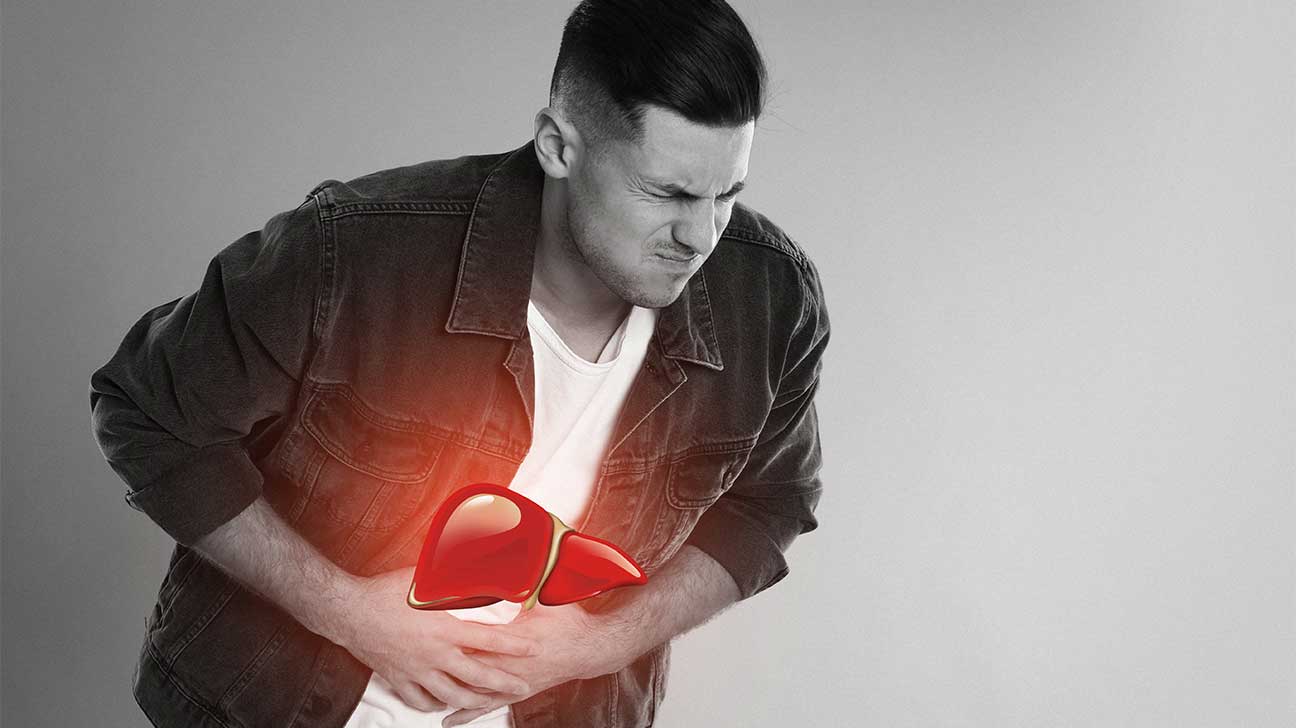
Alcohol abuse can have serious, lasting effects on the liver. Many people assume that liver damage happens after years of heavy drinking, but the early stage of liver disease can occur in just days.
Most people who have liver damage due to alcohol consumption aren’t aware of it. The only way to find out about liver damage is through blood tests, liver function tests, or a liver biopsy.
Because people with substance use disorders are more likely to neglect their health, it’s possible for liver damage to be overlooked for a number of years.
How Does Alcohol Affect The Liver?
The liver is responsible for filtering blood and processing toxins like alcohol and drugs. It also secretes bile, which helps the body digest fats and eliminate waste from the bloodstream.
Alcohol is toxic to the liver. When any amount of alcohol passes through the liver, some of the liver cells die.
The liver is the only organ in the human body that’s capable of regenerating itself. However, prolonged heavy drinking can affect its ability to produce new cells.
Contrary to popular belief, it doesn’t take years of drinking alcohol to incur liver damage. In fact, just a few days of heavy drinking can cause a buildup of fat in the liver, the beginning stages of alcoholic fatty liver disease.
Alcohol-Related Liver Disease (ARLD)
Alcohol-related liver disease is one of the many physical effects of alcohol abuse, and it is fairly common, affecting about 20% of people with alcohol use disorder (AUD).
ARLD occurs when the liver starts showing signs of alcohol-related damage. The earliest signs of ARLD include a buildup of fats in the liver, which indicates the liver is no longer able to perform its job properly.
ARLD can be caused by daily drinking or from binge drinking on a few nights out of the week. The longer a person drinks and the higher their alcohol intake, the greater their risk of ARLD.
Alcohol-related liver disease is progressive and includes three stages:
- alcohol fatty liver disease
- alcohol hepatitis
- cirrhosis
Stage 1: Alcohol Fatty Liver Disease
After a few days of heavy drinking, fats build up in the liver. Such a scenario can occur after a college student’s spring break vacation, a weekend trip to Las Vegas, or a bachelor/bachelorette party.
Most people aren’t aware of the fat in their liver, because it rarely causes any symptoms. The only symptom is an enlarged liver, which would not likely be noticeable at this stage.
The good news is, fatty liver disease is reversible. After a person stays away from alcohol for about two weeks, their liver typically regains normal function and enlargement reverses.
However, if a pattern of periodic heavy drinking continues over years and years, it’s possible for it to cause further damage and progress to stage two of alcohol-induced liver disease.
Stage 2: Alcohol Hepatitis
When ARLD progresses to alcohol hepatitis, a person may be made aware of liver damage through physical symptoms. At this stage, the dead liver cells have caused scarring, known as fibrosis.
Common symptoms of alcohol hepatitis include:
- abdominal pain
- fever
- inflammation of the liver
- nausea
- vomiting
Another symptom at this stage is jaundice, or yellowing of the skin and whites of the eyes. Jaundice is caused by having high levels of bilirubin in the blood, which is normally removed in the bile produced by a healthy liver.
Up to 35% of people who drink heavily will develop alcohol hepatitis, and cases range from mild to severe alcoholic hepatitis. If the case is mild, then it’s possible to reverse damage by quitting drinking.
Stage 3: Cirrhosis
Alcohol-related cirrhosis occurs when scar tissue replaces the majority of healthy liver tissue. Extensive scarring of the liver causes it to shrink and harden, which significantly affects its ability to function.
Cirrhosis is the end-stage of liver disease and, if left untreated, it can lead to liver failure. The damage caused by cirrhosis is not reversible.
Alcohol abuse is the second most-common cause of cirrhosis, apart from hepatitis C. Between 10% and 20% of people with AUD will develop cirrhosis.
People with early-stage cirrhosis may not always have short-term symptoms, which can lead to further progression. As the cirrhosis worsens, there are typically more symptoms.
Symptoms of cirrhosis may include:
- loss of appetite and weight loss
- abdominal pain
- nausea
- fatigue
- severe itching
- jaundice
- bruising and bleeding easily
- spider-like blood vessels (spider angiomas)
- redness on the palms of hands (palmar erythema)
- fluid buildup and swelling in the legs (edema) and abdomen (ascites)
- mental confusion
Severe cases of liver cirrhosis can also cause liver cancer. At this stage, healthcare providers may recommend a liver transplant.
Risk Factors For Alcohol-Related Liver Disease
Though excessive alcohol consumption is the greatest determinant of alcohol-related liver disease, there are other risk factors that can increase susceptibility.
Some of the most common risk factors of ARLD include:
- obesity
- being female
- having a pre-existing liver condition, such as hepatitis C
- malnutrition
- genetic history of substance abuse
Treatment Options For ARLD
Help is available at every stage of alcohol-related liver disease. With the proper health care and treatment, it’s possible to slow the progression and better manage symptoms.
AUD is sometimes best treated with detox and inpatient treatment. People with more severe AUD can face life-threatening complications if they attempt to stop drinking without medical support.
People with alcohol-related liver disease can often reverse the damage to their liver by quitting drinking. While some people can do this on their own, many need outside support.
Alcohol abuse treatment centers, inpatient and outpatient services, and support groups can provide the resources needed to start on the road to recovery.
Get Help For Alcohol Addiction
Alcohol addiction takes a toll on the mind, body, and spirit, but recovery is possible. If you or a loved one has alcohol abuse issues, DetoxRehabs.net will connect you with the treatment services you need.
Article Sources- American Liver Foundation
https://liverfoundation.org/liver-diseases/complications-of-liver-disease/cirrhosis/ - Johns Hopkins Medicine
https://www.hopkinsmedicine.org/health/conditions-and-diseases/alcoholinduced-liver-disease - Mount Sinai
https://www.mountsinai.org/health-library/diseases-conditions/alcoholic-liver-disease


